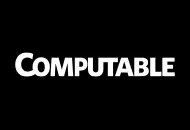The Ministry of Justice is the largest government department in The Netherlands. Although 1,800 civil servants work in its offices in The Hague, a much larger number – 55,000 – are employed in executive departments that deal with the law. These range from the police and the courts to the Dutch child protection agency, its immigration service and the Dutch Forensics Institute.
Challenge: bespoke to content managed
The Ministry of Justices started its site in 1996, but "on a very ad hoc basis", says Willem-Jan Gevers, the Ministry's senior adviser on online media. "A few HMTL hobbyists started putting legislation and news items on the Web."
The Ministry of Justice controls some 100 Web sites; its home Web site is www.justitie.nl. In 2001, the Ministry of Justice commissioned a study, which showed it needed urgently to centralize and streamline its Web content.
The first step was to set up a 'Web knowledge centre', run by the agency that oversees the Ministry's finance and personnel affairs.
The second step was to find a content management solution; SDL Tridion was selected to devise and implement this system.
Benefits: intuitive and user-friendly approach to content management
Gevers likes SDL Tridion's ‘intuitive and userfriendly' approach to content management; more than 100 civil servants work in the department to update the sites regularly.
Rapid integration and development of content is particularly important for the Ministry of Justice because the 16 million people living in The Netherlands (and those outside it) access the site to be informed about the law.
SDL Tridion's content management system, R5, makes it possible to react quickly and accurately to changes in the law or major news events across a variety of sites.
Stability and coherence were paramount. A woman who wants to find out on justitie.nl how she can report that she is being forced into prostitution (a link that is often visited) will only read on if the site gives her clear and cleanly presented information.
The Ministry also chose SDL Tridion for its Outbound E-mail solution. Gevers explains: "We want people to be able to register on the site and receive e-mails about certain areas of the law or on the work that we do. Outbound E-mail will enable us to personalize our notifications very quickly and efficiently."
Proof: pro-active promotion with newsletters and podcasts
"We no longer have to rely on third-party agencies to send out our newsletters, instead we are able to do this ourselves with Outbound E-mail. This way we get more control over the product. And the savings are considerable."
The notification system and the Justice newsletters rolled out in 2006. In 2005, justitie.nl got two million individual hits. Of the department's 100 ‘child' sites, some 60 sit on the SDL Tridion R5 platform. R5 systems are also used for the Ministry of Justice's intranet.
The Dutch government wants to deal pro-actively with its Web presence as much as possible. The New Media Commission, of which Gevers is a member, is supervising the huge task of creating a uniform ‘look' across its many sites. Gevers says: "At the moment the site is available in Dutch and English. We shall add French as well using R5's BluePrinting."
The Ministry of Justice site also features links to podcasts of speechs and debates that visitors can download rather than just being presented with reams of text. Gevers adds, "Instead of people reading about a debate or a change in this or that law they have a direct link to what is happening in Parliament."



